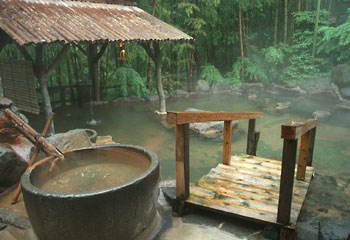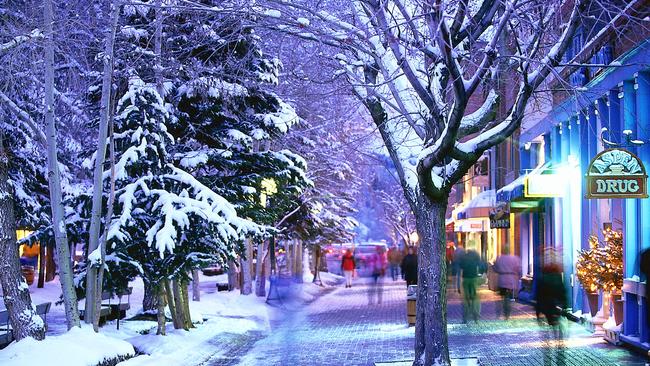Land of the rising snow
RIDING a lift up and sliding back down is much the same anywhere, but it's the unique cultural experiences that set Japan apart as a ski destination.

IN the time it takes to read the US-flavoured news in The Japan Times and eat a Japan Rail bento box breakfast (smoked fish, sesame pork, nori roll, vegetables, pickled radish, sour plum, rice, green tea; about $10), my shinkansen (bullet train) from Tokyo has hurtled across Honshu, Japan's main island, and climbed almost imperceptibly to meet the ragged spine of the 3000m peaks that form the Japan Alps.
In the orderly queues boarding the train early this Saturday morning are dozens of young Japanese decked out in colourful ski gear. A quick trip to the snow is easy when the Asama Super Express takes only 90 minutes from Tokyo to reach Nagano Terminal and then it's less than an hour by coach to the slopes. So, that's 2½ hours from the centre of Tokyo to the site of the 1998 Winter Olympics.
Reaching the more northern Niigata alpine region is even quicker; the Joetsu shinkansen pauses briefly at Yuzawa Town, within 30 minutes of the area's 20 resorts, only 77 minutes after leaving one of the world's biggest cities.
That's fine for residents of Tokyo. But for Australians considering a northern hemisphere skiing holiday, what makes Japan an attractive alternative destination to Europe or North America? Relatively quick access is a big factor. Flying time from Sydney to Tokyo is nine hours. Japan's quality of snow and expansive terrain compares well with the northern hemisphere's best: at Honshu's Shiga Kogen, the country's biggest resort, it takes four days to ride all 75 lifts and ski the hundreds of beautifully groomed runs.
Away from the corduroy and at the northern end of the chain of Japanese islands, Hokkaido's "smoke" has a reputation as the finest off-piste dry powder snow in the world.
Australians who really want to feel at home in Japan choose Niseko in Hokkaido, where many businesses in the resort and village are Aussie-owned and operated. There's also a group of enthusiastic expats at Furano, Hokkaido's other main resort; excellent ungroomed powder bowls are a feature of these locations. Both have scope for skiers and boarders of all abilities, although while Niseko is slanted towards intermediate or advanced runs, 80 per cent of Furano's terrain is rated beginner or intermediate.
Access to Hokkaido's resorts from Tokyo starts with a 90-minute flight to Chitose, Sapporo's new airport. From there, it's a two to three-hour journey to Niseko or Furano by hire car, coach or express train.
On the main island of Honshu, the resorts near Nagano offer extensive slopes. Most popular are Hakuba and Shiga Kogen, both of which hosted 1998 Winter Olympics events. Shiga Kogen is enormous, with a good mix of beginner, intermediate and advanced terrain. There are 21 skiing areas linked by a network of lifts and shuttle buses, and each with its cluster of hotels and B&Bs. In the Hakuba Valley, 10 resorts in the space of 20km or so offer about 160 lifts and 200 groomed trails. Hotels, B&Bs and Japanese inns are grouped around the base of each ski area.
North from Nagano, Niigata's ski resorts claim the heaviest falls in the Japan Alps and the world's longest (5.5km) and biggest capacity (166-person) gondolas. Yuzawa, a popular resort town in the heart of the snow country, is famed for the quality of its sake and its abundant hot springs.
Equipment hire and lift passes in Japan cost about the same as in Australia. At Shiga Kogen, a full-day lift and shuttle-bus ticket costs about $55; ski or board hire is about $45 a day. In Hokkaido, a three-day ticket at Niseko gives access to all three ski areas for about $150. A full-day lift ticket for Furano's cable car, gondola and chairs costs about $45.
Japan has a reputation as a very expensive country to visit. That's true enough if you choose only top accommodation. But there are plenty of reasonably-priced alternatives. Minshuku (Japanese B&Bs) provide the simplest choice and cost about $70 a person a night for a comfortable futon bed in a very compact room, two good meals and shared facilities. Next step up are pension-style hostels and budget hotels, from about $90 a person a night with two meals. Top of the range are traditional ryokan-style Japanese inns and five-star hotels, where prices start at about $150 and go way up.
The experience of riding a lift up and sliding back down is much the same anywhere in the world, regardless of whether the white stuff is on a Canadian, Italian or Japanese slope. What sets Japan apart as a ski destination are the unique cultural experiences: food, landscapes, language. Japan has more than 60 active volcanoes and widespread regions where hot springs bubble up from below. Many hotels on the ski fields have their own onsen, or hot-spring bath.
The protocol for bathing in an onsen is simple but important. Take a small towel. Remove shoes at the door. Undress and leave all your clothes in the basket provided. Inside the bathroom, perch on a low stool at your chosen shower, then soap, shampoo, scrub and rinse thoroughly. Only when you are scrupulously clean may you step into the bath. There's no better way to complete a day's skiing than to immerse yourself in hot water, gazing at a frozen fretwork of branches just outside the open window amid the rising steam as the aches and twinges of every tough turn are soaked away.
And do take time before or after skiing to explore other parts of Japan. Easily the best way to do this is by rail. Japan's high-speed trains travel a long way in a short time. A seven-day Japan Rail Pass (which can be purchased in Australia for about $320) is terrific value, giving almost unlimited train travel throughout the country.
No visit is complete without spending some time in Tokyo. Plan to stay at least a couple of nights and to get around use a JR Pass on the Yamanote (circular) and Chuo (across the city) lines, or purchase a subway ticket for about $12. For a friendly, comfortable and economical place to stay, try Hotel Tateshina in the heart of Tokyo's Shinjuku.



